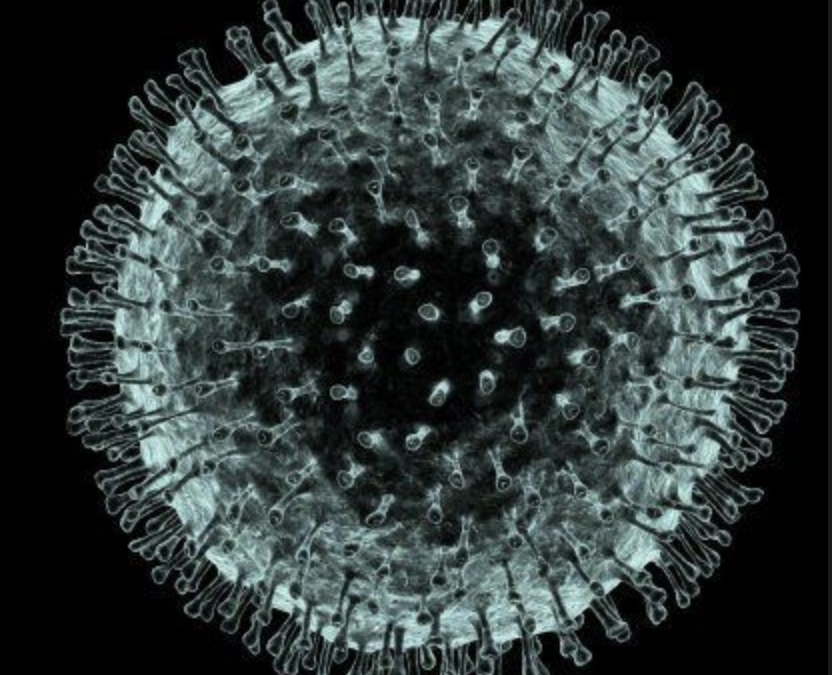Like so many of us I’ve got a lot of time on my hands nowadays and am both stressed and concerned not only about our global health, but our global economics as well.
I think many people feel like the world is spinning out of control and there’s nothing we can do about it. However, I believe we fear most what we know least about, so I decided to learn more about viruses in general and the coronavirus in specific and here’s what I’ve discovered about this destructive menace.
Unlike bacteria, which are the simplest organisms that scientists consider “alive,” viruses are basically bundles of genetic code and are, therefore not alive. They attach themselves to living cells inside a host (in this case us), which enables the viruses to make more copies of themselves.
As harmful as they are, viruses are constructed rather simply, consisting of only two or three components. Inside the viruses there is nucleic acid, which is the overall name for DNA (deoxyribonucleic acid) and RNA (ribonucleic acid), the information-carrying molecules of all cells.
Enclosing this genetic material is a protein shell called the capsid. The capsid:
1) Protects the nucleic acid from digestion by enzymes,
2) Contains the antenna-like structures that cover the exterior of the virus that allows it to attach itself to the host cell, and it
3) Provides the proteins the virus needs to penetrate the host cell membrane and to inject its infectious nucleic acid into the host cell.
Covering the entire virus is a protective layer of fat, or lipids. This layer of fat is easily dissolved, by both nature and chemicals, which actually makes the virus very fragile.
Any material that can dissolve this layer of fat causes the protein molecule to break down and degrade on its own.
So what weapons do we have to destroy the virus?
The simplest thing is soap and water…lots of it…AND USED OFTEN, ESPECIALLY EVERY SINGLE TIME YOU COME IN FROM BEING ANYWHERE. The foam from soap actually cuts through the fat (think Dawn dishwashing soap on a greasy skillet), but you must be sure to create an abundance of foam…don’t skimp on the amount of soap and be sure to use hot (NOT scalding) water because hot water creates more foam than cold water.
Heat is effective because heat melts fat (think of butter melting in that hot skillet), which is another reason to use hot water when you wash your hands, clothes, dishes…anything that may have ever touched a surface where the virus might be or come in contact with airborne droplets (sneezes).
Alcohol or any mixture with alcohol over 65%. Just FYI, isopropyl and rubbing alcohol are the same stuff. It generally comes in 70% or 90% when you buy it in the store so either will work. However, use it straight, do not dilute it with water. It can be used straight out of the bottle or put into a spray bottle. Alcohol is one of the most effective weapons because it dissolves any fat, especially the external lipid layer of the virus, but is highly flammable so should be used with caution and never around an open flame.
You can also use 1 part bleach to 5 parts water. This solution directly dissolves the protein breaking it down from the inside but must NOT be mixed with anything other than water.
While the CDC includes hydrogen peroxide and 39 products with hydrogen peroxide in them as acceptable, the other alternatives…soap, alcohol, heat, and bleach…are proven effective and should be considered your first line of defense.
Dry, warm, bright, and ventilated environments increase the degrading time of the the virus as does UV light.
Using any of the methods listed above causes the fragile virus to degrade. The degrading time depends on the temperature, humidity and where it lies. For example, research determined that in airborne droplets the virus can remain infectious for a least 3 hours, but can remain viable for up to 24 hours on cardboard, and up to 72 hours on harder surfaces like plastic, stainless steel, copper.
While washing your hands with plenty of soap and hot water has a fairly immediate reaction, as you go around your home, office, car, etc using a bleach/water solution or alcohol, you will want to leave the solution on the surface. Do not wipe it up as the effect of the product on the virus requires some “cooking” time.
Social media has perpetuated many myths that are are not only ineffective but are downright dangerous – drinking/gargling with household bleach for example (as in DO NOT DO THIS, household bleach is poisonous and should never be used anywhere near the mouth!). Other ineffective methods include taking/using antibiotics (which only work on living bacteria), Vodka or any other type of spirits, Vinegar, Listerine (might work if it is over 65% alcohol).
Stay tuned for more research, take heart, and stay safe.
REFERENCES
https://science.howstuffworks.com/life/cellular-microscopic/virus-human1.htm
https://www.genome.gov/genetics-glossary/Virus
https://www.cdc.gov/coronavirus/2019-ncov/prepare/cleaning-disinfection.html
https://www.weforum.org/agenda/2020/03/this-is-how-long-coronavirus-lives-on-surfaces
https://klinedentistry.com/swishing-household-bleach-trending-never/

